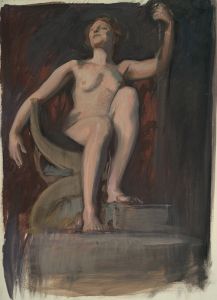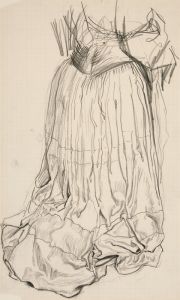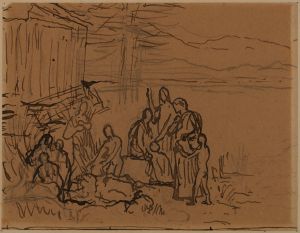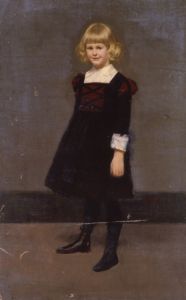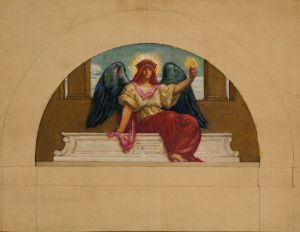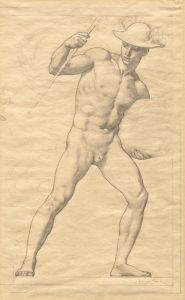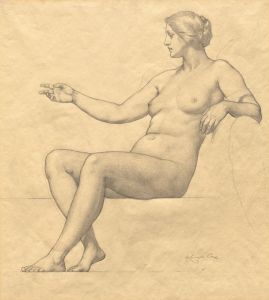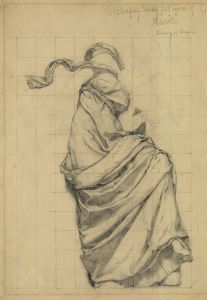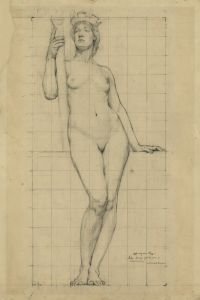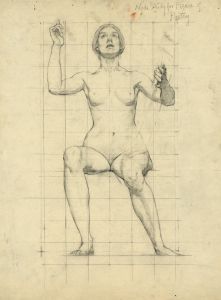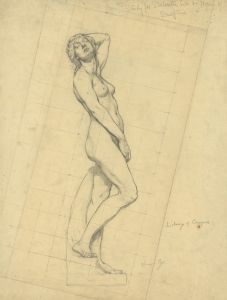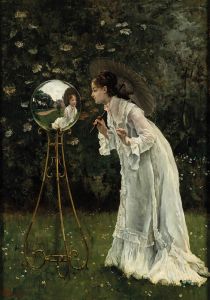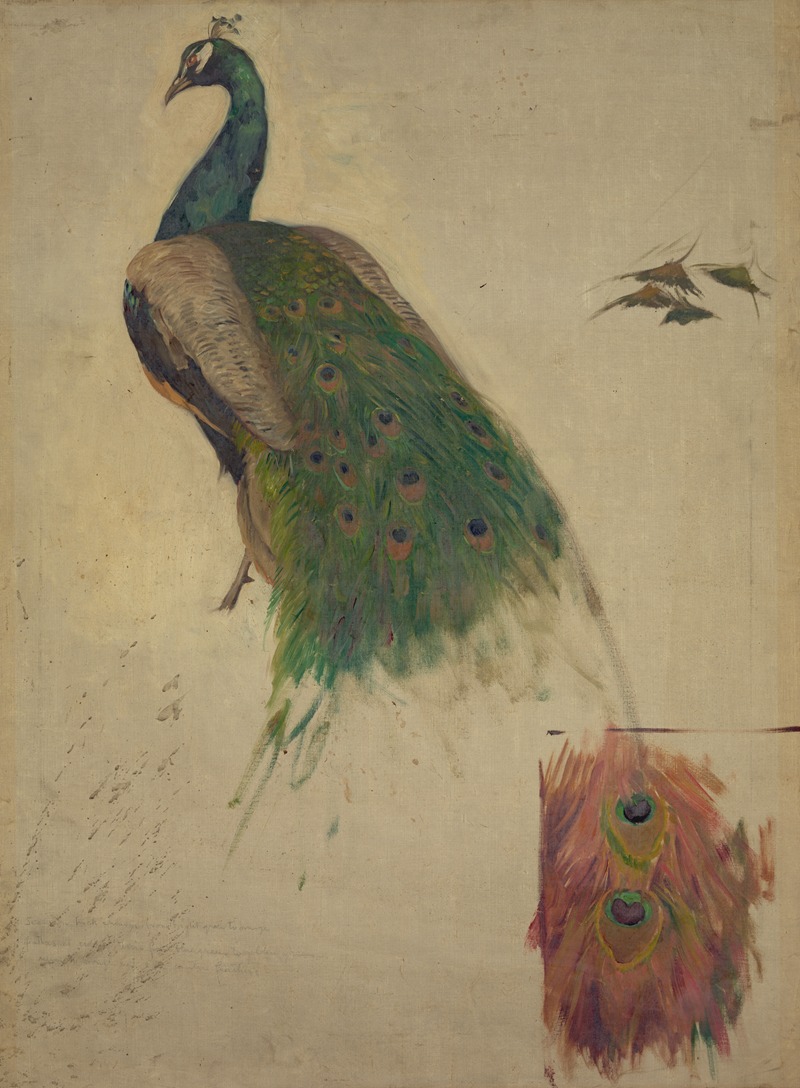
The sciences, study for peacock in tympanum
A hand-painted replica of Kenyon Cox’s masterpiece The sciences, study for peacock in tympanum, meticulously crafted by professional artists to capture the true essence of the original. Each piece is created with museum-quality canvas and rare mineral pigments, carefully painted by experienced artists with delicate brushstrokes and rich, layered colors to perfectly recreate the texture of the original artwork. Unlike machine-printed reproductions, this hand-painted version brings the painting to life, infused with the artist’s emotions and skill in every stroke. Whether for personal collection or home decoration, it instantly elevates the artistic atmosphere of any space.
Kenyon Cox (1856–1919) was an American painter, illustrator, muralist, and writer, known for his academic style and contributions to the American Renaissance movement. One of his notable works is "The Sciences, Study for Peacock in Tympanum," which reflects his commitment to classical themes and allegorical representation.
Kenyon Cox was born in Warren, Ohio, and studied art at the Pennsylvania Academy of the Fine Arts before moving to Paris to continue his education at the École des Beaux-Arts. Under the tutelage of renowned artists like Jean-Léon Gérôme, Cox honed his skills in the academic tradition, which emphasized classical techniques and subjects. Upon returning to the United States, he became a prominent figure in the American art scene, particularly known for his murals and allegorical paintings.
"The Sciences, Study for Peacock in Tympanum" is a preparatory study for a larger mural project. Cox often created detailed studies before executing his final works, allowing him to explore composition, color, and symbolism. This particular study is believed to have been part of a series of works intended for a public building, reflecting the era's interest in integrating art into architecture to convey cultural and intellectual ideals.
In this study, Cox employs the image of a peacock, a symbol often associated with immortality, renewal, and the all-seeing eye due to its ornate plumage. The peacock's presence in the tympanum—a semi-circular or triangular decorative wall surface over an entrance, bounded by a lintel and arch—suggests a connection to themes of enlightenment and the pursuit of knowledge, aligning with the broader allegorical theme of "The Sciences."
Cox's work is characterized by its meticulous attention to detail and adherence to classical aesthetics. His use of allegory was a common practice among artists of the American Renaissance, who sought to convey moral and intellectual ideals through their art. By incorporating classical symbols and themes, Cox's work aimed to elevate public taste and promote cultural refinement.
Throughout his career, Kenyon Cox was also an influential art critic and writer. He contributed essays and reviews to various publications, advocating for the importance of traditional artistic values and the role of art in society. His writings often reflected his belief in the power of art to educate and inspire, a philosophy that is evident in his visual works as well.
"The Sciences, Study for Peacock in Tympanum" exemplifies Cox's dedication to these principles, showcasing his skill in composition and his commitment to using art as a means of intellectual and cultural expression. While the study itself may not be as widely recognized as some of his completed murals, it remains an important example of his artistic process and the thematic concerns that defined his career.
Kenyon Cox's legacy as an artist and educator continues to be appreciated for its contribution to the American Renaissance and the enduring impact of his classical approach to art. His works, including studies like "The Sciences, Study for Peacock in Tympanum," are preserved in various collections, serving as a testament to his influence on American art and culture.





